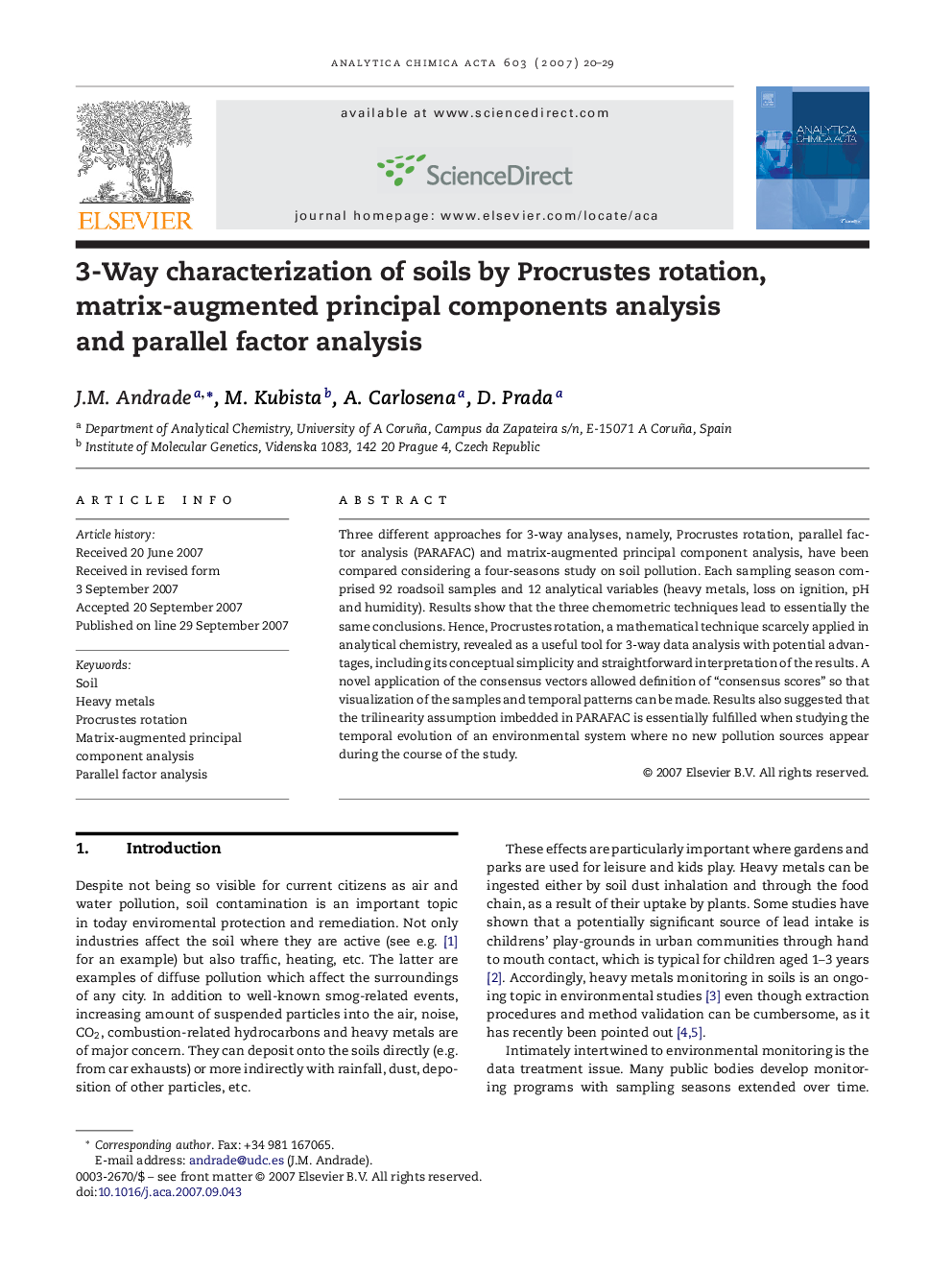| Article ID | Journal | Published Year | Pages | File Type |
|---|---|---|---|---|
| 1170898 | Analytica Chimica Acta | 2007 | 10 Pages |
Three different approaches for 3-way analyses, namely, Procrustes rotation, parallel factor analysis (PARAFAC) and matrix-augmented principal component analysis, have been compared considering a four-seasons study on soil pollution. Each sampling season comprised 92 roadsoil samples and 12 analytical variables (heavy metals, loss on ignition, pH and humidity). Results show that the three chemometric techniques lead to essentially the same conclusions. Hence, Procrustes rotation, a mathematical technique scarcely applied in analytical chemistry, revealed as a useful tool for 3-way data analysis with potential advantages, including its conceptual simplicity and straightforward interpretation of the results. A novel application of the consensus vectors allowed definition of “consensus scores” so that visualization of the samples and temporal patterns can be made. Results also suggested that the trilinearity assumption imbedded in PARAFAC is essentially fulfilled when studying the temporal evolution of an environmental system where no new pollution sources appear during the course of the study.
